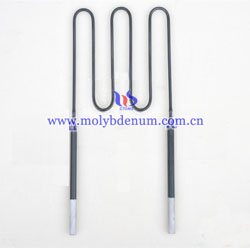Molybdenum Disilicide Resistance Paste
Molybdenum disilicide resistance paste after improvement usually used in consumer electronic products. At the early time, hybrid integrated circuits and partial separation resistor usually use precious metals ruthenium-based glaze glass electrode paste, but ruthenium has high price and per kilogram is about ¥ 2 million, and therefore can not be widely used. Molybdenum disilicide resistance paste had been developed in the 1960s, but due to the large temperature coefficient (≤500ppm / ℃), large sintering sensitivity, so do not got the promotion and application. With the progress of science and technology, the researchers produced new MoSi2 resistance paste. This new MoSi2 resistance paste has small temperature coefficient (less than 300ppm/℃) and sintering sensitivity, good stability. Besides, the performance is close to ruthenium, so it can meet consumer electronics products demand.

Molybdenum disilicide resistance paste performance improvement
The main factors affecting the performance of the resistance are the characteristic of binder and conductive phase. Binders can bond the conductive phase to the substrate and can form dense film, so the conductive phase material should well infiltrate in binder and binder coefficient should match with conductive phase. According to MoSi2 electrical properties, should increase glass binder elasticity modulus to reduce the temperature coefficient of resistance. To reduce the resistivity can dop with MgO into the slurry to adjust TCR.
There are two methods for improved conductivity temperature coefficient and invasive, one is compensation method, which added negative temperature coefficient of the conductive phase to offset the positive temperature coefficient of MoSi2. The second method is pre-sintered, the MoSi2 should pre-sintered at high temperature and MoSi2 will oxygenolysis at above 500 ℃. After oxidative decomposition, there is MoO3 coating layer on the MoSi2 particle surface. MoO3 has better invasive with glass coating, thereby improving the performance of the conductive phase.
To prepare better molybdenum disilicide resistance paste should also improve its production processes. During sintering process should wrap the molybdenum disilicide powder, cut off the air, which can prevent MoSi2 oxidative decomposition at about 500 ℃, so using the secondary sintering method can improve the sensitivity and resistance of the slurry sintering resistance dispersion.
If you have got any interest in molybdenum metals, please feel free to contact us by email: sales@chinatungsten.com, sales@xiamentungsten.com or by telephone:86 592 512 9696/86 592 512 9595.
Related Links: Molybdenum News & Prices
